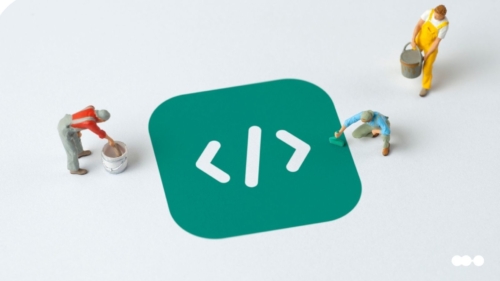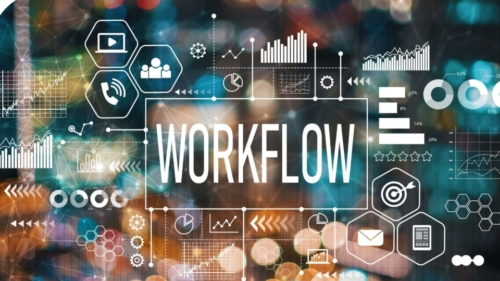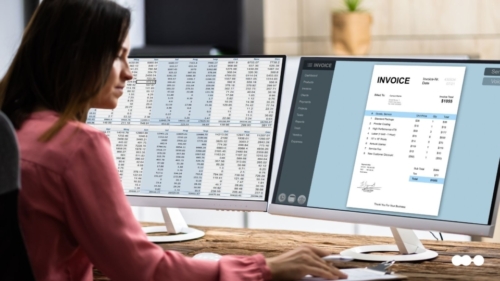ARTICLE SUMMARY
Continuous work improvement is essential to professional growth. Discover 24 ways you can improve your work performance and advance your career.

This article was reviewed by the Pipefy team in . Last update: .
In an era where remote work has firmly established itself as part of everyday life for many professionals, a set of challenges emerged with it. Between the distractions, interruptions, and the continuous need to maintain an agile mindset, it can become difficult to manage, seek, and commit to better ways to improve work performance.
By not taking the time to identify and improve work performance, you may find yourself experiencing issues like a decline in work quality, communication, and professional development.
Whether you’re new to the workforce, seeking a promotion, or trying to make a career change, learning how to continuously develop yourself professionally should be a standard practice that’s inspiring and challenging in a positive way. Don’t wait until your annual performance evaluation — or, worse, until your boss brings it up.
Here are 3 ways to improve work performance and push yourself to become the best version of yourself at work.
Build and automate any workflow for faster results, fewer errors, and less manual work.
Top 3 ways to improve work performance (with examples)
1. Ask for constructive feedback to recognize strengths, weaknesses, and opportunities to improve
There’s no way for a person to be good at everything. We all have strengths and weaknesses. The great thing about acknowledging your weak points is that you’re able to identify opportunities to improve.
Even though you can always find things to improve, focus on identifying the things decreasing your work performance and continuously work on improving them. Don’t settle for “quite alright” when you can achieve “awesome.”
In addition to recognizing weaknesses, it’s important to also pinpoint your strengths and spend time cultivating and improving them. Read, learn, listen — do whatever you can to be the best version of yourself every day.
A great way of understanding your weaknesses and strengths and assessing your overall work performance is by simply requesting feedback. Whether you’re just starting off, seeking promotion, or considering a career change, feedback can provide you with a perspective of yourself and your work that you may not already have. Plus, it’s an opportunity to learn from the “pros,” gain new skills and practice being a better active listener.
Getting started
- Decide on what areas of improvement you’d like feedback on. This can be related to soft skills (indirect aspects of your role, like communication, planning, time management, or teamwork) or hard skills (direct aspects of your role, like writing, data analytics, software knowledge, or language skills).
- Determine who you want to speak with. The ideal partner for this would be someone that you work with on a regular basis and someone who has the bandwidth to provide detailed and considerate feedback. For example, your manager may be a great resource for soft skills feedback, while a peer may be more appropriate for feedback related to your hard skills.
- Prepare your questions. In order to receive feedback that’s helpful, it’s important to carefully consider what you want to ask. If you already have an idea of what you want to work on, more detailed or specific questions would be ideal. If you want to open the floor and get a general assessment of your work performance, open-ended questions might be a better option.
- Take notes. Keep a record of the feedback so that you can refer back to it and track the steps you’re taking to improve your work performance.
- Reflect and respond. Once you’ve requested and received feedback, spend time reflecting on what was shared with you. Next, create a plan of how you’re going to improve and set milestones for each area of improvement.
- Act on the feedback, and then repeat. This one speaks for itself, but it’s important to mention that requesting and considering feedback should not be a one-time occurrence. With your improvement plan and milestones in place, repeat this process periodically to stay on a path toward continuous improvement.
- Use tools to shed light on aspects you can’t see for yourself. Today, artificial intelligence (AI) can become a powerful ally in the way you handle certain challenges. Use it to your advantage.
2. Hack your focus time and time management
Do you know how many times you’re interrupted in a day? According to various studies, it’s estimated that workers are interrupted every 6 to 12 minutes. Interruptions come in many forms, and learning to avoid them is vital for improving work performance.
Whether it’s a Slack chat or your family knocking at your home office door, constant interruptions can cause you to lose focus and waste time you’ve previously allocated to a task, increasing the risk of running late on a deadline.
Understanding yourself
Minimize distractions
- Schedule focus time. Create a one-person meeting in your calendar for deep focus work time by blocking off certain chunks of time.
- Let your team (or family) know you need to “unplug.” Communication is the best solution. Simply alerting your team that you’ll be “offline” — or letting family members know when you need quiet time — gives you the ability to focus without going completely off the grid. If you need to have your phone nearby (and your phone allows this), turn on work hours. This setting mutes all notifications between a certain timeframe (say, 9 a.m. to 5 p.m.) and only allows updates from your chosen contacts.
- Mute your Slack, Google Chat, or Microsoft teams notifications. Whether it’s for 30 minutes or a couple of hours, turning off notifications can help you avoid interruptions. Updating your work status to let your teammates know why you’re temporarily “unplugged” can also help ease nerves around slow response times.
- Set meeting hours. If you do your best work in the morning, set your meeting availability to afternoons. Update your working hours so that meetings can only be scheduled within a certain time frame.
Stay focused
- Change scenery. With remote work, it can be difficult to completely avoid distractions no matter how much time or effort went into designing the perfect home office. Science shows that changing your scenery provides a boost in your sense of well-being, which can in turn improve your overall mood and ability to focus. If you find that your home office is fueling your mental clutter, consider moving to a different room or workspace entirely. The same applies for those commuting into the office. If you need a break from your desk, book a private room or try a communal office work space. So, if you’re feeling stumped or experiencing brain fog, going outside and getting some fresh air could be the brain boost you need to get through a task or deadline.
- Block out distractions — literally. Use a browser extension that allows you to temporarily block work interruptions like browsing social media for a designated period of time. Here are two options to get you focused: Forest and BlockSite.
- Clean up your work area. A cluttered workspace may make it harder to stay focused. Start your morning routine with a quick sweep of your workspace to “set the tone” for a clear, focused, and organized workday.
Improve time management
- Track how long it takes you to complete your tasks. If time management is a challenge or if you just want a baseline of how you work, start timing how long it takes you to complete a task. By understanding your current time management, you can have a better understanding of how to make the most of it. Over time, you can begin to approach tasks more efficiently.
- Notice when you’re multitasking. If you find yourself losing track of time and not sure why, keep a log of every time you become distracted or find yourself multitasking. This will make it easier to recognize distraction triggers or habits and how to work on eliminating them.
3. Right-size your tech and tools
From the moment you log into your workday, how many tools are used? Emails, messages, databases, dashboards, spreadsheets, call recordings, and so much more! In the endless pursuit for greater productivity and efficiency, you may find yourself weighed down by tech or tools that actually slow your work pace. To resolve this, take control of your work performance toolkit, extracting the best of each one.
Make an analysis
- Determine whether your existing tech or tools are creating problems. As your work evolves, so will the tools you use to complete it. Take inventory of all the tools you’re currently using and assess whether they’re still doing the job they’re intended for or whether they’re adding extra obstacles to your work. For example, does your favorite task tracker often glitch, requiring additional time to manage? Is that spreadsheet you’re using becoming a monster to wrangle? Are you overutilizing AI?
- Eliminate duplicate or redundant tools. If you find yourself communicating across various channels, choose the one that you use most often and stick to it. This way, you’re not jumping between platforms searching for information or people.
Areas of improvement at work: 21 ways to get started
1. Advocate for the right tools or technology
Digital transformation is top of mind for many companies today. The goals for this are greater operational efficiency and cost effectiveness. While you may not have total control over what technology your company deploys, you can have a say in what tools you and your team adopt. (Plus, being a proactive problem solver showcases leadership skills and a willingness to take on challenges.)
Whether you’re interested in gaining greater visibility over your work, better process management capabilities, or seeking an opportunity to improve the operational excellence of your department or team, here are some features to consider when advocating for new technology or tools:
- For better process management, choose a tool that offers a no-code visual user interface. This type of solution empowers business users with IT-approved tools to build and optimize workflows as needed to improve efficiency, productivity, and agility.
- For greater productivity, choose a solution that offers business process automation so you can easily automate manual, time-consuming, and repetitive tasks that waste resources and precious employee time. A no-code tool will often feature automation capabilities that allow teams to easily design and deploy automated workflows at a fraction of the time and cost typically associated with bespoke IT-crafted solutions.
- For better communication, make sure that you can also automate notifications, emails, or assignee alerts. Another key feature is seamless integration with your existing tech stack so that the flow of communication and updates is uninterrupted.
In addition to all these features and capabilities, the ideal tool will also have built-in security features to meet all your governance and security requirements. This includes permission management, SSO, 2FA, audit logs, and business rules. This increases visibility and control while maintaining compliance and data protection.
2. Automate tasks
If you find yourself in a loop of repetitive, time-consuming tasks, start automating and take control of your workday with AI process optimization.
Check out these two ways you can hack your workday and get back time better spent on value-adding work:
- Drafting and sending a high volume of emails. Automate the heavy lifting by creating an automation trigger that will send off follow-up emails by a certain deadline or time. Email templates that pull data from your process can also help eliminate time spent drafting emails.
- Notifications and workflow updates. Never lose track of the status of items with automated trail audits. Automated notifications can be set to occur when an item moves or falls behind, keeping it visible for follow-up and tracking important updates.
Read our article to learn more about automation and the types of tasks that can be automated.
3. Set milestones for your professional development
We have a natural tendency of shooting for the stars and establishing challenging goals.
It’s okay to be bold when setting goals to improve work performance. The problem is that big projects can become overwhelming. Setting milestones can help you achieve those moonshot goals whether personal, professional, or both.
By breaking those big personal and professional projects into smaller goals, you’ll stay motivated with each victory you achieve.
Setting individual success metrics to analyze your goal is also very helpful to boost morale and energy levels. Track the progress, allow yourself to enjoy your success, (as small as it may be) and share it with your team.
4. Plan your workday and tasks
Planning your daily schedule, plus organizing and prioritizing tasks or goals, is essential to improving your work performance.
When making your to-do list, be reasonable and keep tasks achievable. It’s much better to establish realistic goals and overachieve than the opposite. Making a detailed plan in advance is also very useful for identifying which tasks you can postpone for more urgent, valuable tasks, and which ones you can pass off without affecting the result.
5. Prioritize your work effectively
After planning, organize your work by breaking down big projects into smaller tasks and establishing a due date and priority status for each one. Then, prioritize your work by combining the most urgent and essential tasks, taking into consideration how much time it’ll take to finish each one.
6. Delegate your tasks like a leader
In order to be able to prioritize tasks and manage your to-do list effectively, it’s important to learn how to delegate and say “no” to tasks that may jeopardize your progress. The Eisenhower matrix is a great tool to help you categorize and prioritize tasks that are urgent, not urgent, important, and not important.

7. Avoid multitasking
Most people claim they’re experts at multitasking, but the only thing multitasking actually does is compromise the quality of work.
Even though it feels like multitasking allows you to accomplish more, it actually does quite the opposite. When you start working at more than one thing at a time, take a step back, determine which task is more important and focus entirely on it. Working on one task at a time makes you faster, less stressed, and less prone to making mistakes.
8. Don’t leave things half done
This is very likely a consequence of trying to multitask (and another thing I’m guilty of).
Try to remember how many projects you’ve started only to abandon them shortly after: New Year’s resolutions, diets, a new sport, or hobby. They’re all great for a while, and then they start to slip straight back to your to-do list. Don’t let that happen.
Once you start a task, try to see it all the way through. Motivate yourself by recording every project you’ve completed.
9. Gamify your workday
To really boost your productivity, turn your work into a game with the Pomodoro Technique. This challenges you to break down your work in 25-minute intervals, separated by breaks, to make daunting tasks seem more manageable.
With the timer set, you may find yourself becoming more aware of your time, working faster, and breaking half-done habits.
10. Embrace continuous learning and training
Change is happening all the time, all around us. Reading is the best way to learn about new tools, trends, and technologies affecting your company or industry, and a great way to keep up with the competition.
To improve your soft skills, read one book a month.
To improve your hard skills, try to read at least one relevant article regarding your industry every da, or watch training or educational videos on learning platforms like LinkedIn Learning, Udemy, or Coursera, Keep in mind that some of these courses may cost money, so check with your employer to see if they offer an education stipend or access to a free business accounts.
11. Improve your communication skills
Whether you’re a manager or not, make it your ultimate goal to establish a consistent communication channel among your team members.
Effective communication at work can start by:
- Evaluate your work performance on a frequent basis to keep your goals and responsibilities in mind every time you have to make a decision.
- Create a solution by talking with your colleagues, and actively listening to what they have to say.
- Make sure everyone knows their opinion matters when brainstorming new and improved ways to achieve better results.
Keep in mind that communication is a two-way street. Whenever you’re feeling uncertain or unclear about anything, it’s better to ask than to assume.
12. Don’t forget to rest
Admitting you need a break is not a weakness, it just means you’re aware of your limitations and you’re wise enough to acknowledge it.
Stress and burnout levels are increasingly affecting people at alarming rates. It won’t do anyone any good to push yourself after you’ve reached your limit. Your productivity will suffer, and you’ll get even more stressed for underperforming, and so on. This is a vicious cycle you don’t want to get trapped into.
Rest time is just as important to your professional development as any other aspect. Turn off your computer, go away for a weekend, get a full night’s sleep, change your scenery, and always remember to maintain a healthy work-life balance.
13. Find a mentor
When you’re in college, internships are a great way to gain experience and break into the workforce. Once you’re in the workforce, seeking mentorships is a great way to continue building experience. If approaching people in your industry sounds intimidating, start small and turn to a space in which you’re already comfortable: your workplace and existing coworkers.
After introducing yourself and expressing why you’re interested in meeting with them, schedule a time and meeting cadence that works for both parties — whether that’s a biweekly virtual meeting or a monthly in-person coffee shop outing.
14. Be a mentor
Volunteering to mentor someone within or outside of your organization is a great way to step up and take on a leadership role.
15. Grow your professional network
Did you know that employee referrals are four times more likely to be hired? While this is a big benefit of building a network of professional relationships, networking is also a great way to improve work performance. By meeting new people and gaining new skills and perspectives, you can charge your professional development and gain opportunities to grow and challenge yourself.
16. Learn to plan and host smarter meetings
There’s a well-known business adage that sums up the reality of meetings: it could’ve been an email. Work meetings are a necessary time to come together with colleagues, but they’re often too long, too abundant, too unproductive, or too disorganized.
To avoid making these common meeting mistakes, keep these tips in mind:
- Share a clearly defined meeting agenda. When an agenda is set and all participants understand what the goal of the meeting is, it’s more likely to run smoothly and efficiently.
- Include relevant information or resources to the invite so everyone’s on the same page.
- Send out post-meeting action items or follow-ups. Have you ever attended and wondered “now what”? Avoid this by ending the meeting with a list of action items, or follow-up with a post-meeting note so everyone knows what’s expected by when and by whom.
- If you can, wrap up early. If you’ve scheduled a 30-minute meeting but all points have been covered in 20, there’s no point in staying for the remaining 10 minutes.
- If it can be shared in an email, send an email. Not everything requires a meeting. If it’s a small update or brief request that can be easily shared in an email or sent in a message, consider that the first option versus scheduling a block of time.
17. Adopt an asynchronous communication style
For many remote-first workplaces, it’s not uncommon to work in one timezone or country while colleagues work in another timezone or country. Adopt an asynchronous mindset so you can effectively communicate and work at different times and from all places.
18. Avoid workplace drama or gossip
Everyone is entitled to a safe and comfortable work environment that is professional and respectful of each other. Avoid any topics of conversation or unprofessional actions that may create a toxic or uncomfortable atmosphere, or separate yourself from those conversations as they occur.
And while it’s nice and sometimes encouraged to get to know your colleagues, be sure to maintain a healthy separation between personal and professional parts of your life and allow your colleagues to do the same.
19. Ask questions
There’s no such thing as a bad question. Whether you’re new to the workforce or a seasoned professional, learning is a lifelong practice that requires attention and confidence. This tip is especially important as you level-up in your career or take on new responsibilities.
20. Learn and grow from your mistakes
Mistakes are inevitable. It never feels good to be the cause of them at work, but what’s important is how you respond to them. Rather than dwelling on mistakes, take them as lessons and opportunities to grow.
21. Keep track of your wins
A great way to improve your work performance is by keeping track of your accomplishments. This not only helps you see how far you’ve come in your career or role, but it also serves as proof of your abilities and potential if you ever decide to pursue a career transition or promotion within your company.
This can be as simple as a private working document with all your achievements, project results, or praise that you’ve received. If your company uses a performance management platform like Lattice, you can easily pull any praise that you’ve received from the feedback log or achievements from the key results log.
Use Pipefy to improve work performance
Pipefy is a no-code process automation solution that makes building and automating standardized and centralized processes easy. No-code AI automation enhances agility for business users without sacrificing IT’s need for security — improving end-to-end process management and work performance for all departments.
This means you can track your work and scale improvements when you need them and how you need them.






